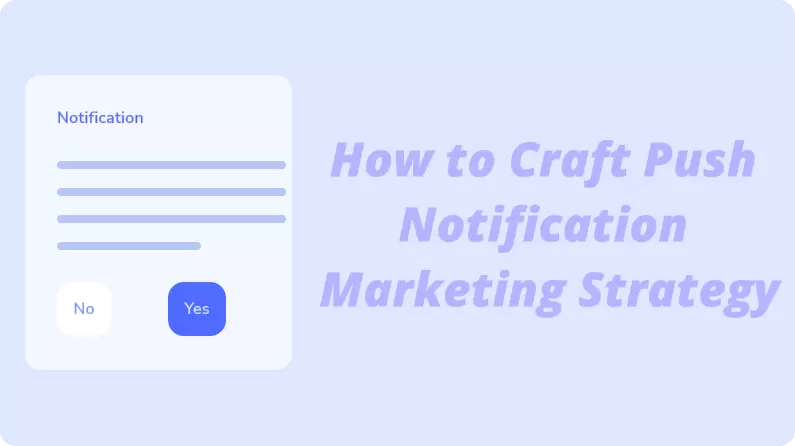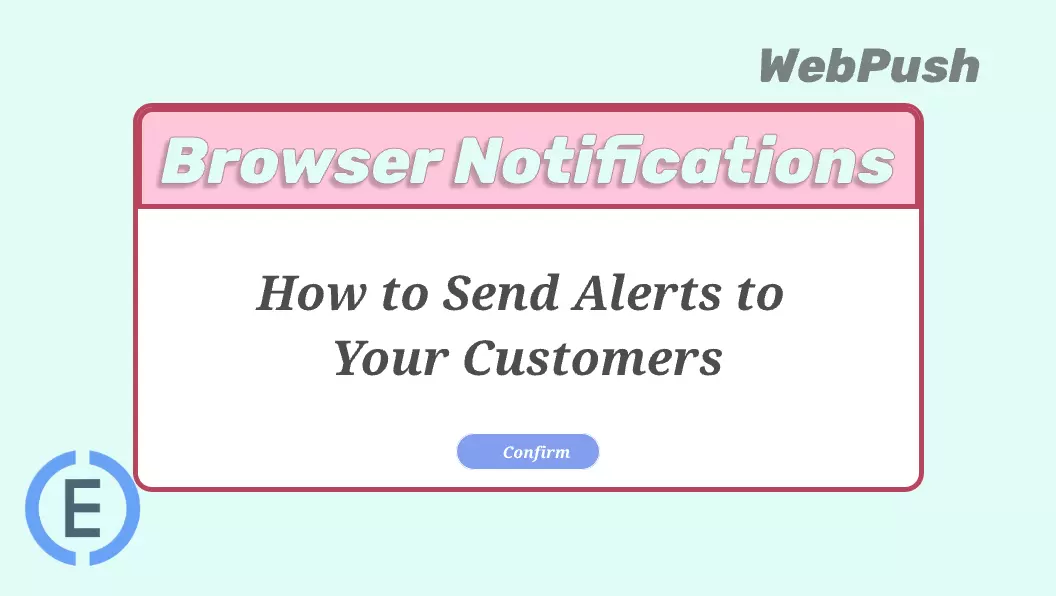In the rapidly evolving landscape of digital engagement, Web Push notifications have emerged as a critical tool for businesses to maintain direct communication with their audience. However, as companies increasingly adopt this technology, a crucial question often gets overlooked: Are you paying for engagement, or are you paying for dormant data?
The answer lies in understanding the fundamental differences between Web Push pricing models and how they align with your business objectives. Today, we'll explore why the pricing structure of your Web Push provider could be the difference between scaling efficiently and overpaying for inactive users.
The State of Web Push Pricing: A Market Overview

The Web Push industry has traditionally followed the footsteps of email marketing platforms, adopting a subscriber-based pricing model. On the surface, this seems logical – more subscribers mean more value, right? Not necessarily.
Consider this common scenario: A website builds up a substantial subscriber base over time, but like most digital properties, not every subscriber visits daily. Some check in weekly, others monthly, and some may have subscribed months ago and rarely return. Yet under traditional pricing models, you pay the same rate for all subscribers, regardless of their engagement level.
Understanding the Two Primary Pricing Models

The Traditional Approach: Subscriber-Based Pricing
Most Web Push providers charge based on the total number of subscribers in your database. This model typically offers tiered pricing based on subscriber count ranges.
Common Challenges with This Approach:
- The Inactive Subscriber Problem: It's a well-known challenge in digital marketing that subscriber lists naturally accumulate inactive users over time. With Web Push, these dormant subscribers still count toward your pricing tier, even if they haven't visited your site in months.
- The Growth Dilemma: As your marketing efforts succeed and your subscriber base grows, your costs increase proportionally – creating a situation where success directly translates to higher expenses, regardless of actual engagement.
- Seasonal Business Challenges: Businesses with seasonal traffic patterns find themselves paying peak-season prices year-round, based on their highest subscriber counts.
The Performance-Aligned Model: DAU-Based Pricing
A more sophisticated approach measures actual engagement through Daily Active Users (DAU). This model charges based on the peak number of unique users who actually visit your website within a billing period.
Key Advantages of This Approach:
- Pay for Real Engagement: You're only charged for users who actually interact with your platform, creating a direct correlation between cost and value.
- Growth Without Penalty: Businesses can aggressively grow their subscriber base without immediate cost implications. A larger subscriber pool means more potential for re-engagement campaigns without financial penalties.
- Natural Cost Optimization: Your costs automatically align with your traffic patterns and business cycles.
Practical Examples: How Pricing Models Impact Different Businesses
Example 1: The E-commerce Scenario
Imagine an e-commerce platform that has built up a large subscriber base through years of operation. During peak shopping seasons, traffic surges. During quiet periods, many subscribers don't visit at all.
Under subscriber-based pricing, this business pays the same monthly fee regardless of whether it's Black Friday or a slow Tuesday in February. With DAU-based pricing, costs naturally scale with actual business activity and revenue potential.

Example 2: The Content Publisher's Dilemma
A digital publication might have hundreds of thousands of subscribers accumulated over years. However, reading patterns vary dramatically – some readers check daily, others browse occasionally when interesting content appears.
Traditional pricing would charge for the entire subscriber base, while DAU-based pricing would only charge for those actually consuming content on any given day.
The Strategic Advantages of DAU-Based Pricing
- Business Metric Alignment: When your Web Push costs correlate with actual site traffic, there's a natural alignment between expenses and potential revenue generation.
- Quality-Focused Engagement: This model incentivizes both businesses and providers to focus on meaningful engagement rather than just accumulating subscriber numbers.
- Predictable Scaling: While daily traffic can vary, most businesses have predictable patterns that make budgeting straightforward and logical.
- No Database Dilemmas: You never have to make the difficult decision of purging potentially valuable subscribers just to reduce costs.
Industries That Typically Benefit from DAU-Based Pricing
- E-commerce & Retail: Traffic patterns often follow promotional calendars and seasonal trends, making usage-based pricing more equitable.
- SaaS & B2B Platforms: User engagement can vary significantly between trial users, active customers, and those in off-boarding phases.
- Media & Publishing: High subscriber counts combined with varying daily readership patterns make usage-based pricing particularly logical.
- Travel & Hospitality: Strong seasonal patterns mean paying flat rates for subscribers doesn't match business realities.
Evaluating Your Current Pricing Model
When assessing whether your current Web Push pricing aligns with your business needs, consider:
- Engagement Patterns: How does your daily traffic compare to your total subscriber base?
- Seasonal Variations: Does your business experience significant traffic fluctuations?
- Growth Goals: Are pricing concerns limiting your subscriber acquisition efforts?
- Re-engagement Potential: Would you benefit from maintaining a larger pool of subscribers for future campaigns?
The Evolution of Web Push Pricing
As the Web Push industry matures, we're seeing an evolution toward more sophisticated pricing models that better align provider and client interests. This shift represents a broader trend in SaaS toward usage-based pricing, where costs reflect actual value delivered.
Making an Informed Decision
The choice between subscriber-based and DAU-based pricing isn't just about cost – it's about finding a model that supports your business strategy. If your goal is to build a large, diverse audience with varying engagement patterns, paying only for active users can provide the flexibility to grow without constraint.

A Forward-Thinking Approach to Web Push
Progressive providers are already embracing this shift toward usage-based models. EngageLab, for instance, has built our entire Web Push pricing structure around DAU, recognizing that businesses should invest in actual engagement rather than just potential reach. This approach allows their clients to focus on growth and engagement strategies without the burden of linear cost increases.
The key insight is this: in today's performance-driven digital landscape, your Web Push investment should scale with your actual user engagement, not just your database size. Whether you're running an e-commerce platform, publishing content, or managing a SaaS product, aligning costs with real usage creates a sustainable foundation for growth.
As you evaluate your Web Push strategy, the question isn't just about features or delivery rates – it's about whether your pricing model supports or hinders your growth ambitions. The right pricing model can be the difference between cautious database management and confident audience expansion.
Curious about how DAU-based pricing could impact your Web Push strategy? Explore how usage-based models are helping businesses grow their audiences without growing their concerns about costs.









